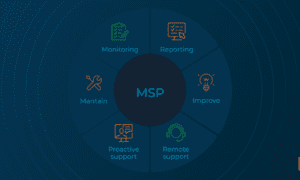Workplace accidents can happen in a split second, often leaving injured employees facing long recoveries and mounting medical bills. For many, workers’ compensation becomes a lifeline—covering basic medical expenses and part of their lost income. But while this system provides some relief, it doesn’t always address the full impact of an injury. Workers may still face unpaid bills, lasting pain, or an uncertain financial future.
When another party besides the employer is responsible for the accident, there may be another path toward justice. This is known as a third-party liability claim, and it allows injured employees to seek additional compensation from outside individuals or companies whose negligence caused or contributed to their injuries. An experienced workers’ comp lawyer in Baton Rouge can help determine whether such a claim is possible and guide workers through both processes to ensure they recover everything they’re entitled to.
The Limits of Workers’ Compensation
Workers’ compensation is designed to provide quick and limited financial support after a workplace injury. It covers medical treatment, a portion of lost wages, and rehabilitation, regardless of who was at fault. This system benefits both sides—employees receive guaranteed coverage, and employers are protected from direct lawsuits by their workers.
However, the tradeoff is significant. Workers’ comp doesn’t pay for emotional distress, pain and suffering, or full wage replacement. It also limits recovery options if the injury results in long-term disability or loss of future earning capacity. For employees with serious or permanent injuries, the benefits may not come close to meeting their actual needs. That’s where third-party claims can bridge the gap.
What Is a Third-Party Liability Claim?
A third-party liability claim is a separate personal injury lawsuit filed against someone other than the employer who contributed to the worker’s injuries. This could be another contractor, a property owner, a product manufacturer, or even a driver. In these cases, the third party’s negligence plays a direct role in causing the accident, allowing the injured worker to pursue additional compensation.
For instance, imagine a delivery driver injured in a crash caused by a reckless motorist while on the job. While the driver can collect workers’ compensation from their employer, they can also file a third-party claim against the at-fault motorist. Similarly, if a defective tool causes an injury, the tool’s manufacturer could be held responsible for producing unsafe equipment.
Common Scenarios for Third-Party Claims
Many types of workplace accidents involve negligence from outside parties. Some common examples include:
- Construction site injuries: When subcontractors, equipment suppliers, or property owners create unsafe conditions.
- Vehicle accidents: When employees are injured in collisions caused by non-employees while performing work duties.
- Defective products: When malfunctioning tools, machinery, or safety gear lead to injuries.
- Unsafe property conditions: When workers are hurt on third-party premises with hazards like poor lighting or unmarked dangers.
How Workers’ Compensation and Third-Party Claims Work Together
It’s possible to receive workers’ compensation benefits while also pursuing a third-party claim. However, these two legal paths function differently. Workers’ comp covers immediate medical and income-related costs, while third-party lawsuits can include pain and suffering, loss of future income, and other long-term damages.
If the worker wins a third-party case, part of the award may go toward reimbursing the workers’ compensation insurer for benefits already paid. This process, called subrogation, prevents double recovery for the same expenses. A skilled attorney ensures this process is handled properly, allowing the injured worker to keep as much of their compensation as possible.
Benefits of Filing a Third-Party Claim
The greatest advantage of a third-party claim is that it expands the types of damages workers can recover. Unlike the workers’ comp system, a civil lawsuit can include:
- Full wage recovery: Including lost future earning potential.
- Pain and suffering: Compensation for physical and emotional distress.
- Loss of enjoyment of life: For long-term physical limitations or emotional trauma.
- Punitive damages: In rare cases, additional penalties may apply when the third party acted with gross negligence or reckless disregard for safety.
This broader scope of recovery can make a tremendous difference in helping workers rebuild their lives after catastrophic injuries.
Proving Negligence in a Third-Party Case
Winning a third-party claim requires proving that the defendant acted negligently. This involves four main elements: duty, breach, causation, and damages. Essentially, the worker must show that the third party had a duty to act safely, failed to do so, and directly caused the injury as a result.
Evidence is crucial in these cases. Witness statements, accident reports, safety violations, and expert testimony can all support a claim. For example, in a product liability case, engineers or safety experts may testify that a defect made the product unreasonably dangerous. The stronger the evidence, the greater the chance of success.
Why These Cases Can Be Complex
Third-party claims add a layer of complexity to workplace injury cases. They require balancing two systems—workers’ compensation and civil law—while ensuring compliance with deadlines and insurance procedures. Coordination is key because mishandling one claim could jeopardize the other.
Additionally, identifying the responsible party isn’t always straightforward. Large construction sites, for instance, may involve multiple contractors, subcontractors, and equipment vendors. Determining who is legally responsible takes careful investigation and documentation. Legal representation ensures that every potentially liable party is held accountable.
How an Attorney Can Help
Pursuing both workers’ compensation and third-party claims requires legal knowledge and strategic planning. An attorney experienced in workplace injury law can investigate the cause of the accident, collect crucial evidence, negotiate with insurers, and handle subrogation issues on the worker’s behalf.
Beyond legal strategy, a lawyer also ensures that victims receive fair treatment from insurers who may try to minimize payouts. They can evaluate all potential sources of recovery, from product manufacturers to negligent drivers, maximizing the total compensation available. Legal representation is especially vital for workers with severe injuries, as their long-term needs often exceed what basic benefits can cover.
Seeking Full Recovery After a Workplace Injury
When workers get hurt on the job, they deserve more than just partial compensation. Workers’ compensation helps with immediate costs, but it doesn’t cover the full financial, physical, and emotional impact of serious injuries. Third-party liability claims let injured workers seek accountability and get the resources they need to move on.
Exploring all legal options allows injured workers to hold everyone responsible accountable. With professional help, they can achieve financial stability and find a sense of justice and closure. No one should suffer because of someone else’s negligence without a chance for full recovery.



































